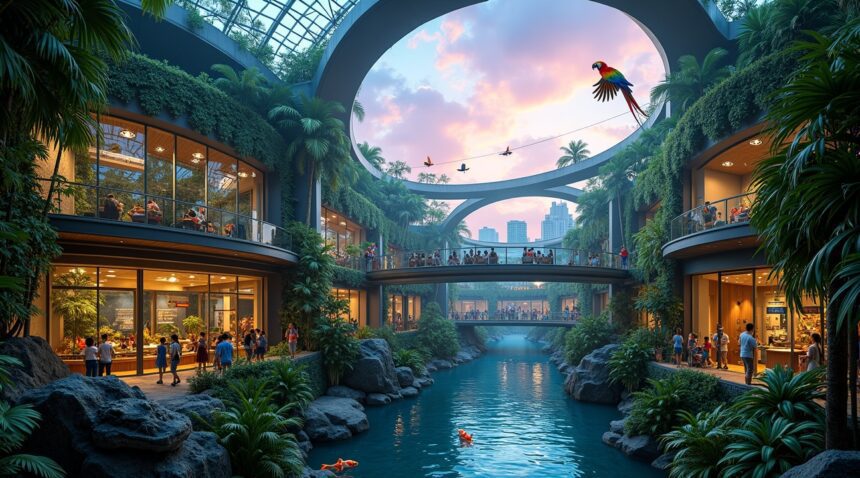The Philippine Biodome Grand Opening
The Philippine Biodome officially opened on December 17, 2024, marking a major milestone as the country’s first and only biodome facility located at Manila Ocean Park in Ermita, Manila.
This innovative and environmentally conscious facility offers visitors an 80% open-air design that fosters natural interaction with over a dozen exotic and native species. It combines entertainment with conservation education, offering live shows, animal encounters, and a dazzling aurora-inspired spectacle called Borealis Nights.
Key Takeaways
Wildlife Diversity
- Features both Philippine endemic and international species, including the Rufous Hornbill, Blue and Gold Macaws, Ball Pythons, and Asian Small-Clawed Otters.
Interactive Programming
- Amphitheater Show & Tell presentations introduce audiences to the featured animals in an educational format.
- Flying Encounters provide up-close experiences with birds during open-air demonstrations.
- Crocodile Tunnel Adventure offers safe, close-up viewing points of crocodiles through specially designed enclosures.
Evening Attractions: Borealis Nights
- Enjoy stunning light displays inspired by the aurora borealis at 6:30 PM and 7:15 PM.
- Evening re-entry options are available for visitors who have already attended during the day.
Admission & Access
- Ticket price: P750 for same-day entry or P700 for advance bookings beginning in 2025.
- Tickets include full access to all live shows, wildlife exhibits, and night displays.
Conservation & Sustainability
- Interactive learning stations promote environmental and species conservation awareness.
- Green architecture principles are applied, including vertical greenwalls and eco-friendly materials.
To learn more or plan your visit, check out the official Manila Ocean Park website.
Manila Ocean Park Unveils Game-Changing Urban Sanctuary in the Heart of Ermita
The Philippine Biodome officially opened its doors on December 17, 2024, marking a significant milestone as the country’s first and only biodome facility. Situated strategically at Manila Ocean Park in Luneta, Ermita, Manila, near the iconic Quirino Grandstand, this groundbreaking attraction transforms the urban landscape into an innovative sanctuary that seamlessly blends entertainment, education, and conservation efforts.
I can confidently say this facility represents a revolutionary approach to eco-tourism in the Philippines. The biodome functions as an immersive, state-of-the-art botanical garden and wildlife exhibit that challenges traditional concepts of enclosed entertainment spaces. What sets this facility apart is its impressive design featuring approximately 80% open-air space, creating an authentic connection between visitors and nature while maintaining controlled environmental conditions.
Sustainable Architecture Meets Immersive Experience
The architectural design emphasizes sustainable principles through thoughtfully integrated features that enhance both visitor experience and environmental responsibility. Vibrant flora surrounds the entire structure, while vertical greenwall gardens create stunning visual displays that serve dual purposes of aesthetic appeal and air purification. These design elements showcase how modern attractions can prioritize eco-friendly practices without compromising visitor engagement.
The facility’s commitment to sustainable architecture extends beyond visual appeal. Every element has been carefully planned to minimize environmental impact while maximizing educational value. Visitors experience nature in ways previously unavailable in urban Manila, making this marine conservation destination particularly valuable for families and educational groups.
The Philippine Biodome stands as more than just another tourist attraction. It represents a fundamental shift in how conservation facilities can operate within dense urban environments. By combining open-air sustainability principles with cutting-edge immersive experiences, the biodome creates opportunities for meaningful environmental education while supporting local tourism infrastructure.
This pioneering facility establishes new standards for eco-tourism destinations throughout Southeast Asia. The biodome’s strategic location near existing cultural landmarks enhances Manila’s appeal as a comprehensive destination for both domestic and international visitors. Through its innovative approach to wildlife exhibition and botanical education, the Philippine Biodome positions itself as an essential stop for anyone interested in experiencing sustainable tourism practices firsthand.
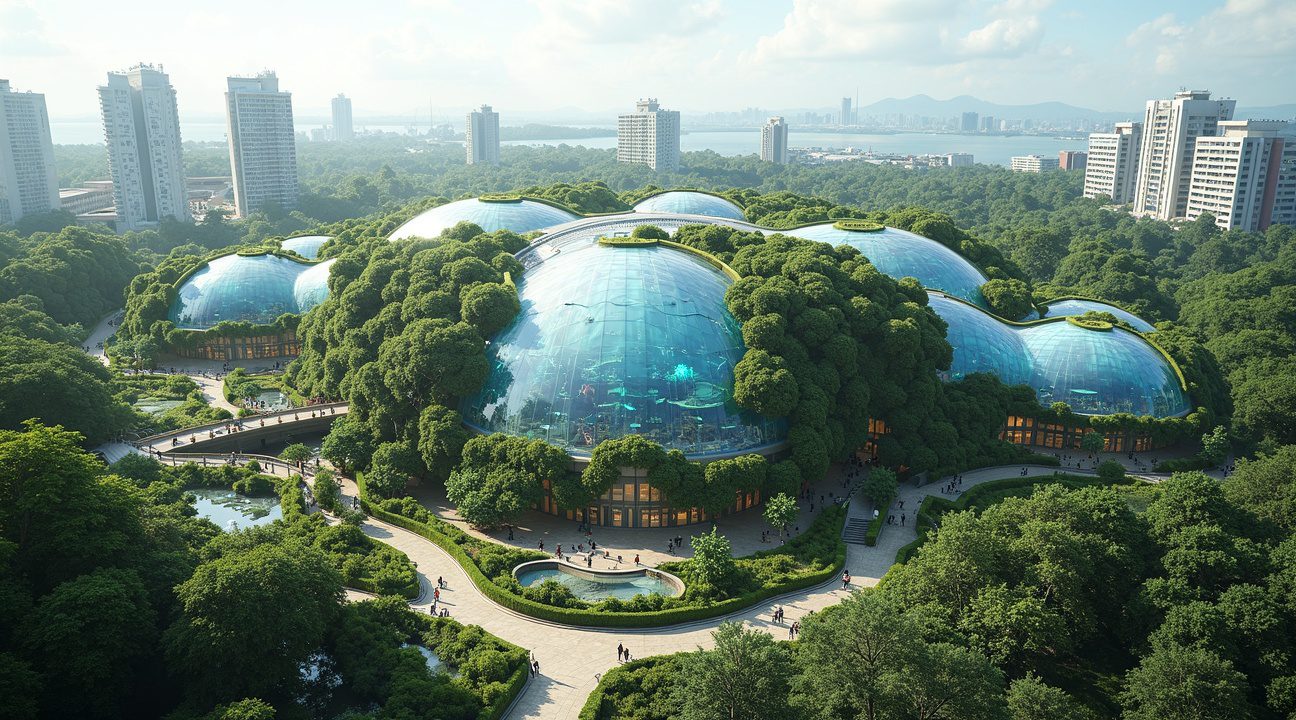
Meet Over a Dozen Exotic and Native Species Under One Roof
The Philippine Biodome houses an impressive collection of wildlife that showcases both international species and the country’s unique native animals. I find this facility creates an exceptional opportunity to observe creatures from different ecosystems all within a single location.
Diverse Wildlife Collection Spans Multiple Ecosystems
Visitors can encounter several fascinating reptile species throughout the facility. The reptile exhibits feature the Ball Python, Burmese Python, and Green Iguana, each representing different habitats and adaptive strategies. These displays demonstrate the incredible diversity found in reptilian life forms.
Bird enthusiasts will discover an equally impressive avian collection. The exhibits include:
- Blue and Gold Macaw – Known for their striking coloration and intelligence
- Rufous Hornbill – A Philippine endemic species that highlights local conservation importance
- Brahminy Kite – An elegant raptor species
- Sun Conure – Vibrant parrots with social behaviors
- Budgerigar – Small, colorful birds popular for their playful nature
The facility goes beyond traditional exhibits with engaging animal encounters. Guests can observe the Bearded Dragon, whose calm demeanor makes them fascinating to watch. The Asian Small-Clawed Otter, classified as a vulnerable species, demonstrates the critical need for wildlife protection efforts.
A special tunnel experience creates an immersive encounter with the native Saltwater Crocodile. This design element allows visitors to safely observe these powerful predators while gaining educational insights about their role in local ecosystems. The experience emphasizes both the beauty and importance of protecting Philippine waters and their inhabitants.
The aquatic zones feature carefully maintained environments including a Butterfly Koi Fish Tank and Fresh Water Tank. These displays showcase aquatic biodiversity while providing peaceful observation areas for guests.
Additional species include the Cape Fur Seal and Mallard Duck, which round out the facility’s comprehensive collection. Each animal represents different conservation stories and ecological relationships, creating educational opportunities for visitors of all ages.
The emphasis on the Rufous Hornbill as a Philippine endemic species particularly resonates with conservation goals. This focus helps visitors understand how biodomes contribute to local wildlife preservation efforts while providing safe spaces for species observation and education.
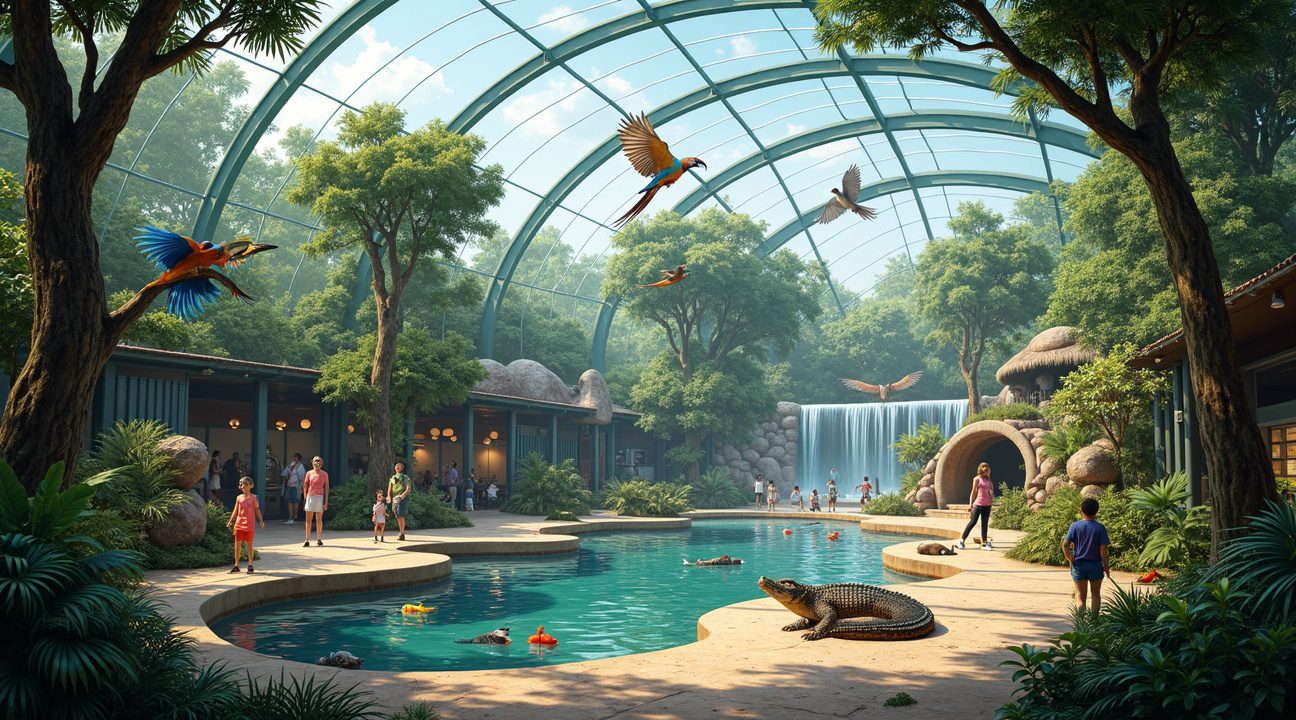
Daily Shows and Hands-On Animal Encounters Transform Learning into Adventure
The Philippine Biodome delivers immersive educational experiences that blend entertainment with conservation awareness through carefully scheduled daily programming. These attractions create memorable moments while teaching visitors about wildlife preservation and the importance of protecting natural habitats.
Scheduled Entertainment and Educational Programming
The Amphitheater Show & Tell serves as the biodome’s centerpiece attraction, featuring multiple daily presentations that bring visitors face-to-face with exotic animals. During weekdays, these engaging sessions run from 11:10 am to 4:30 pm, providing ample opportunities for families and school groups to participate. Weekend and holiday schedules begin earlier at 10:10 am, accommodating the increased visitor volume and giving guests more flexibility in planning their visit.
Each presentation combines live animal demonstrations with conservation education, allowing attendees to observe animal behaviors up close while learning about habitat protection efforts. The shows cater to diverse age groups, ensuring both children and adults remain engaged throughout the experience.
Interactive Wildlife Adventures
Beyond traditional presentations, the biodome offers several hands-on experiences that encourage direct animal interaction.
- The Flying Encounter: Provides guests with opportunities to feed and interact with colorful sun conures and budgerigars in specially designed flight areas. Visitors can witness these vibrant birds’ natural behaviors while participating in supervised feeding sessions that highlight the importance of proper wildlife care.
- The Crocodile Tunnel Adventure: Represents one of the facility’s most thrilling attractions, featuring a transparent tunnel that passes directly through the saltwater crocodile habitat. Guests crawl through this unique viewing passage, gaining an unprecedented perspective of these powerful predators in their aquatic environment. This experience demonstrates the impressive size and grace of saltwater crocodiles while maintaining complete safety for visitors.
- Zipline Adventure: An upcoming ride will soon allow guests to soar above the dome’s tropical landscape, offering spectacular aerial views of the entire facility. This addition promises to combine adventure recreation with environmental appreciation, giving riders a bird’s-eye perspective of the biodome’s diverse ecosystems and architectural design.
These interactive experiences reflect the facility’s commitment to making wildlife education both accessible and exciting. Similar conservation efforts have gained recognition worldwide, much like how blue whales return to Philippine waters has captured international attention for marine conservation. Each attraction serves a dual purpose: providing entertainment value while fostering deeper understanding of wildlife conservation principles and environmental stewardship responsibilities.
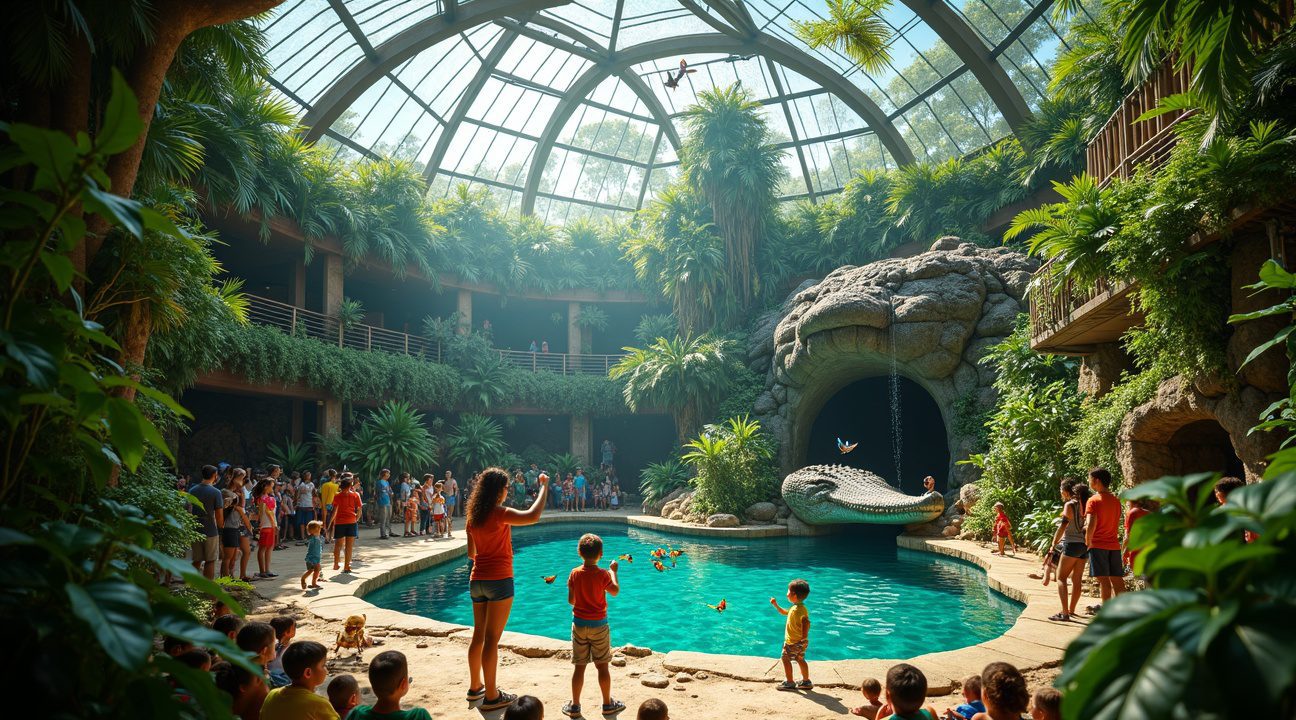
After Dark Magic: Aurora-Inspired Light Show Transforms the Biodome Experience
Borealis Nights: A Nightly Spectacle
When darkness falls over the Philippines’ first biodome, visitors discover an entirely different experience awaits them. The Borealis Nights display transforms the facility into a breathtaking venue that rivals any entertainment destination in the country. This immersive light show draws inspiration from the Aurora Borealis, creating dancing patterns of color across the biodome’s interior surfaces that captivate audiences of all ages.
The scheduled presentations at 6:30 pm and 7:15 pm daily provide two opportunities for guests to witness this spectacular display. I recommend arriving early for either showing, as the visual effects begin subtly before building to their full intensity. The timing allows families to experience both the educational animal encounters during daylight hours and the magical atmosphere that emerges after sunset.
Extended Access and Atmospheric Transformation
Smart planning ensures guests can maximize their biodome experience by offering re-entry privileges even after animal encounters conclude at 6:00 pm. This thoughtful arrangement allows visitors to enjoy dinner nearby before returning for the evening’s main attraction. The biodome’s atmosphere undergoes a dramatic shift as natural lighting fades and the aurora-inspired effects take center stage.
The interactive lighting elements respond to movement and sound, creating unique moments for each audience.
- Families often discover that children become mesmerized by the shifting colors and patterns.
- Adults appreciate the sophisticated technology behind the display.
- Photography enthusiasts find countless opportunities to capture stunning images.
I suggest checking the facility’s camera policies before the show begins.
This innovative addition positions the Philippine biodome as more than just an educational facility. The entertainment value extends well beyond traditional zoo or aquarium experiences, offering visitors a reason to return multiple times. The contrast between day and night experiences creates a comprehensive attraction that appeals to tourists seeking unique activities and locals looking for regular entertainment options.
Vibrant lighting effects cascade across the biodome’s structure, transforming familiar spaces into otherworldly environments. The technology creates an illusion of being inside an actual aurora, with swirling greens, blues, and purples that shift and dance overhead. Each presentation varies slightly, ensuring repeat visitors encounter fresh visual experiences during subsequent visits.
Affordable Access to World-Class Wildlife Education and Conservation
The Philippine Biodome breaks down financial barriers that often prevent families from experiencing premium wildlife education. I find the pricing structure remarkably accessible, with same-day tickets costing P750 and pre-booked tickets available for P700 starting in 2025. This pricing strategy makes world-class conservation education available to a broader segment of Filipino families who previously couldn’t afford similar experiences.
Admission grants complete access to the facility’s comprehensive offerings. Visitors receive full access to all animal exhibits, educational shows, interactive activities, and the spectacular Borealis Nights evening display. This all-inclusive approach eliminates hidden costs and surprise fees that plague many tourist attractions, allowing families to budget confidently for their visit.
Convenient Booking and Visitor Guidelines
Securing tickets proves straightforward through two primary channels. Online purchases through Klook offer convenience and guaranteed entry, while on-site ticket purchases provide flexibility for spontaneous visits. However, advance booking becomes essential during weekends and holidays when demand peaks significantly.
The facility maintains strict policies to protect both animals and visitors. Several important guidelines ensure optimal experiences:
- Outside food remains prohibited to maintain animal health and prevent potential disease transmission
- Pets cannot accompany visitors due to stress factors for resident animals
- Weather protection like umbrellas or raincoats proves essential given the 80% open-air design
- Re-entry permissions apply only to evening light shows, not daytime animal tours
These restrictions, while initially seeming limiting, actually enhance the overall experience by maintaining professional standards comparable to international facilities.
The biodome’s open-air design creates an authentic natural environment but requires weather preparedness. Tropical climate considerations become particularly important during monsoon seasons when sudden downpours can occur. Smart visitors pack lightweight rain gear and sun protection to maximize their comfort throughout extended visits.
Food stalls scattered throughout the premises provide dining options without forcing visitors to leave and forfeit their admission. Local cuisine and international favorites cater to diverse tastes while supporting the facility’s operational sustainability. Souvenir shops offer meaningful keepsakes that help fund ongoing conservation programs, making purchases feel purposeful rather than commercial.
The evening re-entry policy for Borealis Nights demonstrates thoughtful visitor experience planning. Guests can enjoy daytime animal interactions, take breaks outside the facility, then return for the illuminated evening spectacle without purchasing additional tickets. This flexibility acknowledges that full-day visits can prove exhausting, particularly for families with young children.
Conservation education takes center stage through interactive activities designed for various age groups.
- Children engage with hands-on learning stations
- Adults appreciate detailed information about Philippine endemic species and global conservation challenges
Educational shows combine entertainment with serious conservation messaging, creating memorable experiences that extend learning beyond the visit.
The facility’s commitment to animal welfare shapes every policy decision.
- Food restrictions prevent visitors from accidentally feeding animals inappropriate items that could cause illness or behavioral problems
- Pet exclusions eliminate stress factors that could disrupt carefully managed animal environments and breeding programs
Staff training ensures consistent information delivery across all educational programs. Visitors receive accurate, current data about conservation efforts, species protection initiatives, and environmental challenges facing Philippine wildlife. This educational component justifies the admission cost by providing value that extends far beyond simple entertainment.
The biodome’s accessibility extends beyond pricing to include physical accommodations for visitors with mobility challenges. Pathways accommodate wheelchairs and strollers, while rest areas provide comfortable spots for extended visits. These considerations reflect genuine commitment to inclusive access rather than token gestures.
Seasonal programming keeps return visitors engaged with fresh content throughout the year. Special exhibitions, breeding announcements, and conservation milestone celebrations provide reasons for multiple visits, maximizing the educational investment families make in their children’s environmental awareness.
Weather contingency plans ensure visitor satisfaction regardless of conditions. Covered areas provide shelter during storms, while climate-controlled spaces offer relief from extreme heat. This preparation demonstrates professional operation standards that justify the premium pricing compared to basic zoos or animal parks.
Watch a highlight of Borealis Nights here:
Conservation Mission Drives Every Exhibit and Educational Program
Conservation efforts form the foundation of every experience within the Philippine Biodome. I appreciate how each exhibit carefully integrates educational materials that highlight ongoing species protection initiatives and environmental stewardship practices. Interactive displays don’t simply showcase wildlife; they actively engage visitors in understanding the critical connections between biodiversity preservation and ecosystem stability.
The facility dedicates significant space to endangered species native to the Philippines, creating immersive environments where visitors can learn about conservation challenges facing these vulnerable animals. Educational programs throughout the dome emphasize practical steps individuals can take to support biodiversity protection efforts. Each display features detailed information about:
- Habitat preservation
- Breeding programs
- Collaborative conservation partnerships working to protect Philippine wildlife
Interactive Learning Experiences Foster Environmental Responsibility
The biodome’s educational approach extends beyond traditional viewing experiences. Interactive learning stations allow visitors to participate in conservation simulations and understand the direct impact of human activities on local ecosystems. These programs incorporate hands-on activities that demonstrate sustainable practices, from habitat restoration techniques to wildlife monitoring methods.
Animal welfare policies maintain the highest standards throughout the facility, ensuring that every exhibit prioritizes both educational value and ethical treatment of wildlife. Visitors can observe conservation practices in action, witnessing how proper animal care contributes to broader conservation goals. The facility’s commitment to environmental responsibility becomes evident through its sustainable operations and educational messaging.
Educational content consistently reinforces the message that biodiversity protection requires active participation from individuals and communities. Programs target different age groups, ensuring that conservation awareness reaches visitors from elementary students to adults. Staff members trained in conservation education lead specialized tours that highlight specific environmental challenges and success stories from Philippine conservation efforts.
The biodome’s approach connects global conservation concepts to local environmental issues, helping visitors understand their role in protecting Philippine ecosystems. Each exhibit tells a story about:
- Species survival
- Habitat preservation
- The ongoing efforts required to maintain healthy biodiversity levels
Visitors leave with practical knowledge about supporting conservation initiatives and understanding their personal impact on environmental health.
Through carefully designed educational experiences, the facility transforms casual visits into meaningful learning opportunities that inspire long-term environmental consciousness. The biodome’s conservation mission ensures that entertainment value never overshadows educational goals, creating a balanced experience that both informs and motivates visitors to become active participants in environmental protection efforts.
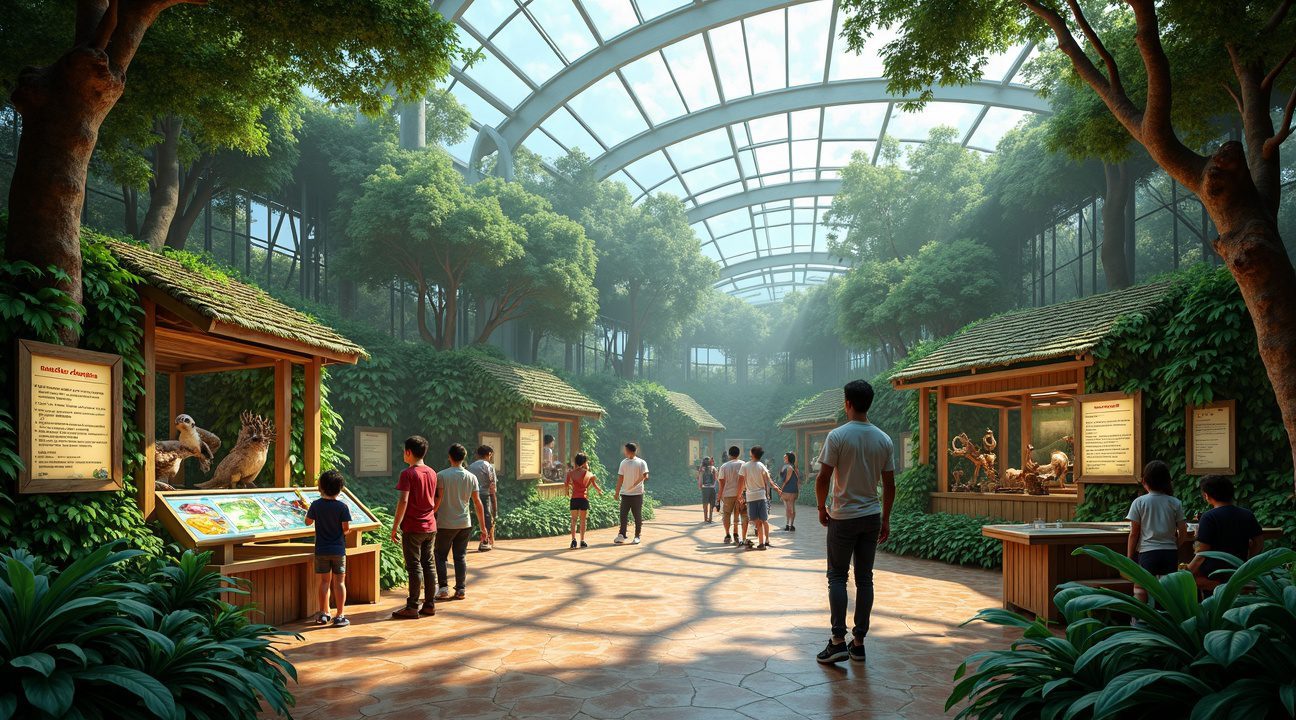
Sources:
Klook Blog: “Manila Ocean Park Opens the First and Only Biodome in the Philippines”
YouTube/The Art of Tour: “Philippines’ FIRST & NEWLY Opened BIODOME!”
Manila Ocean Park Official Page: “Philippine Biodome – Manila Ocean Park”

